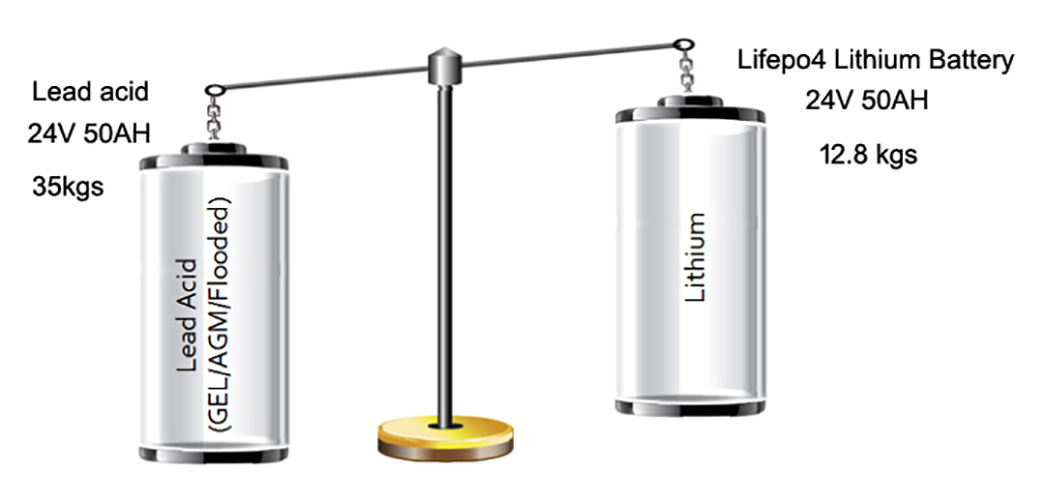Industry Information
Home News Industry Information Lithium battery VS Lead Acid battery

Introduction to lithium battery
Lithium battery: It is a secondary battery (rechargeable battery) that relies on lithium ions to move between the positive and negative electrodes to work. Usually Single Lithium battery voltage is 3.7V(3.6V) or 3.2V(3.3V).
Introduction to Lead Acid battery
A lead-acid battery (VRLA) is a battery whose electrode is mainly made of lead and its oxide, and the electrolyte is a sulfuric acid solution.
A single-lead lead-acid battery has a nominal voltage of 2.0V, can be discharged to 1.5V, and can be charged to 2.4V. In applications, 6 single-cell lead-acid batteries are often used in series to form a 12V lead-acid battery. There are also 24V, 36V, 48V and so on.
Application
At present, lead-acid batteries and lithium batteries are widely used in various fields, such as electric vehicles, Electric scooters, Energy storage system, Golf cart, Camping Car, Car audio, Motorcycle, RV, Electric Marine, AGV, Forklift and so on.
Lithium battery and lead acid battery difference comparison
1.Cycle Life:
The lead-acid battery is deep-filled and deep-discharged within 400 times, and the life span is about two years. The lithium battery has strong durability, slow consumption, more than 1000 charge and discharge, For LiFePO4 batteries, the cycle life is more than 3500 times with 80%DOD Therefore, the cycle life of lithium batteries is about 5-10 times that of lead-acid batteries.
2.Energy Density
For Lead Acid batteries, the energy density is about 40-45wh/KG, but for Lithium batteries, the energy density is 120WH/Kg-170WH/Kg, some cells can reach more than 200Wh/kg. Therefore, in the case of the same capacity, the lithium battery is about 30%-50% smaller than the lead-acid battery.
3.Safety
For Lead acid battery, there is no BMS inside, so there is no protection. Battery packs often catch fire due to improper use.
But for Lithium battery pack, we will put one BMS into the battery pack to protect the battery from overcharge, over-discharge and short circuit.
4.Environment
There is a large amount of lead in the lead-acid battery. If it is not handled properly after disposal, it will pollute the environment and cause pollution in the production process.
But Lithium materials do not contain any toxic or hazardous substances, and are considered by the world to be environmentally friendly batteries. The batteries are free from pollution during production and use.
5.No memory effect
No matter what state the lithium iron phosphate battery can be used with the charge, no need to first discharge and then recharge
6.Charge and discharge electrical energy efficiency
Lithium ion battery charge and discharge energy conversion efficiency can be greater than 97% - lead-acid battery charge and discharge energy conversion efficiency is about 80%
7.Charging time
At normal temperature, the lithium battery can be continuously charged without accidents such as battery expansion and liquid leakage, and the capacity is maintained at 95% or more. And under the dedicated charger, you can perform fast charge and discharge.
Lithium batteries, as a new environmentally friendly energy, now are strongly supported by our government. The development prospect of Lithium batteries is very bright. That is to say, production cost of Lithium batteries may decrease and distributors will get more profits.
Previous How is solar energy stored in batteries?
Next None